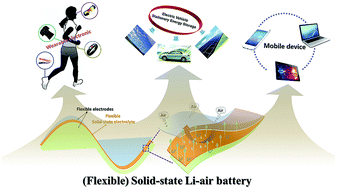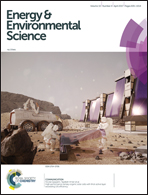Status and prospects of polymer electrolytes for solid-state Li–O2 (air) batteries
Abstract
Li–air batteries have drawn considerable attention due to their high energy density and promising implementation in long-range electric vehicle and wearable electronic devices. Nevertheless, safety concerns, mainly derived from the use of flammable organic liquid electrolytes, have become a major bottleneck to the strategically crucial applications of Li–air batteries. Polymer electrolytes with non-toxicity, low vapor pressure, and non-flammable properties provide a feasible solution to safety issues through the replacement of organic liquid electrolytes, although fundamental understanding of polymer electrolytes for Li–air batteries is still insufficient. Accordingly, substantial research efforts have been devoted to achieving next-generation solid-state Li–air batteries with polymer electrolytes. Herein, we provide a specific review on the development of polymer electrolytes for Li–O2 (air) batteries, from comprehensive insight to emerging horizons, especially in understanding the underpinning chemistry and electrochemistry that govern the properties of polymer electrolytes for the solid-state lithium–air batteries. The discussion will highlight the recent progress in and challenges associated with polymer electrolytes for Li–O2 (air) batteries, as well as corresponding strategic perspectives.



 Please wait while we load your content...
Please wait while we load your content...